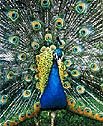Among the various flowers of Indian sub-continent, the flower Lotus is regarded with divinity and grace. Often, Goddesses Lakshmi and Saraswathi are associated with the flower lotus. Even Lord Siva, who wanted to escape the wrath of the Lord Saneeswaran, morphed himself into the shape of a bee and took asylum inside a lotus. Buddhists regard this flower as a sacred one.
Lotus symbolizes purity, beauty, majesty, grace, fertility, wealth, richness, knowledge and serenity. They are found in white and pink colors in general and they grow in shallow and murky waters. Some blue colored flowers are also sighted. These flowers enjoy a warm sunlight and intolerant to cold weather. Hence they cannot be seen blossoming in the winter. The floating leaves and flowers have long stems, which contains air spaces to maintain buoyancy.
The plant is having various uniqueness attached to it. Though the large leaves of the plant are floating on the surface of the water, even a drop of water is not accommodated on top of the leaves. Perhaps, they are teaching the human beings, to lead a life of non-attachment and avoid the worldly pleasures.
Depending upon the level of water in the tank, the stems will rise. In this fashion, it is guiding the human beings to rise upto the situation leading to a genuine elevation in their lives. As the world famous 'Thirukural' says,
"Vellathanayathu malar neetam manthartham
ullath thanyathu ouyarvu"
signifying, in relation with the water level of a tank, the stem will rise. In the same way, depending upon their ambitions and thoughts, human beings can elevate themselves in their life.
In Indian religious epics, references of lotus are made, in relation with eyes and feet of divine persona. For instance "Kamala Kannan" referring Lord Krishna with the contextual meaning, a person having eyes with the color of the pink lotus. Also, it is coupled with the feet of deities. "Kamala Patham" means lotus feet implying the feet of the god. "Charan Kamala Patham" implying, submit oneself in totality, at the lotus feet of the god.







